antiAtlas #4, 2021
Borderless imaginaries, divergent mobilities: Migrants’ re-appropriation of urban and logistical spaces in Patras
Marco Mogiani
This article explores the multifarious ways in which freight and migrant mobilities have rearticulated to one another in the port of Patras. It argues that, through the re-appropriation of urban and logistical empty spaces, migrants have elaborated alternative strategies of settlement and escape that have allowed them to navigate the border and create independent patterns of mobility. Marco Mogiani obtained his PhD in Development Studies at SOAS and is currently University Assistant at the University of Vienna. His work looks at border management within capitalism; migrant mobilities across the EU; acts and practices of citizenship. Keywords: migrant mobility, logistics, Trans-European Network, borderless imaginaries, re-appropriation of space.
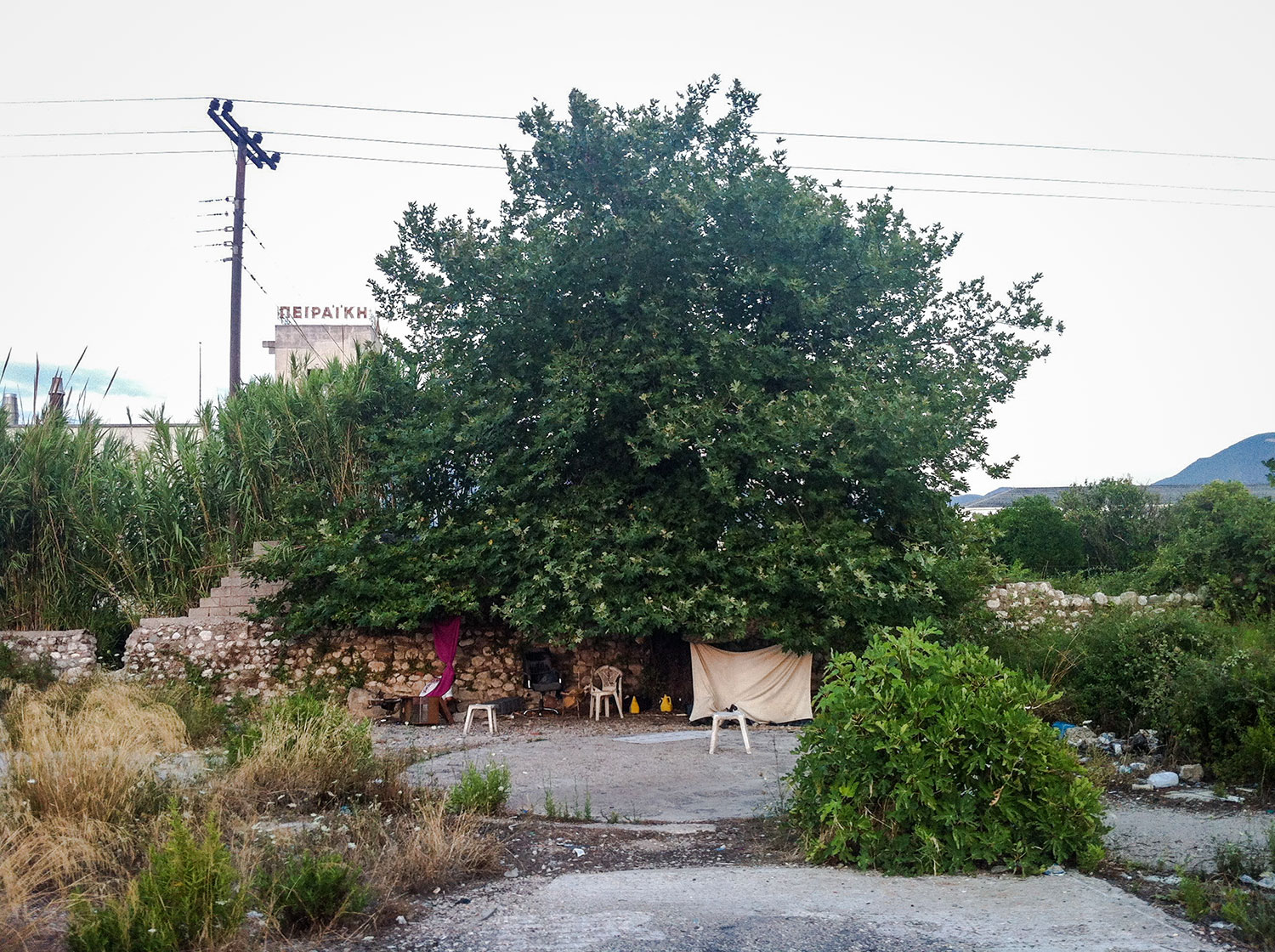
The internal area of the factory VESO B. Some remnants of dilapidated walls are visible. On the background, the tower of Peiraiki-Patraiki. Photo, Marco Mogiani, 2015.
To quote this article : Mogiani, Marco, "Borderless imaginaries, divergent mobilities: Migrants’ re-appropriation of urban and logistical spaces in Patras" published on October 1st, 2021, antiAtlas #4 | 2020, online, URL : www.antiatlas-journal.net/04-borderless-imaginaries, last consultation on Date
I. Introduction
1 The port of Patras (Greece) is a crossroad of intersecting and at times divergent mobilities: the mobility of capital, reconfiguring space following the imperatives of accumulation and profitability; the mobility of lorries, regulated by the strict timetable of ferryboats and the requirements of the just-in-time distribution networks; the mobility of workers, who circulate back and forth the restricted area abiding by the port security regulations; the mobility of passengers, protected by safe and recognisable routes; and the mobility of migrants, infiltrating and disrupting the networks that capitalism creates. With their unpredictability and turbulence (Papastergiadis 2000), migrants constantly attempt to cross the port fences and surreptitiously sneak underneath the lorries inside the port area, moved by their desire to reach other European destinations. As these different agents intersect across the port area, they continuously produce and shape variegated, sometimes overlapping, geographies of mobility. As these different agents intersect across the port area, they continuously produce and shape variegated, sometimes overlapping, geographies of mobility. Drawing from ethnographical research in the abandoned factories that migrants squat in front of the port, this article explores the multifarious ways in which the mobilities of freight and migrants, in particular, have rearticulated to one another. It will do so in three ways. First, it will critically analyse how the mobility of freight has been reconfigured within the process of deepening and widening of the European common market, which has first imagined – through maps and plans – and later developed – through the creation of a comprehensive transport network system – a borderless European space. Second, it will investigate the development of the logistical network around Patras, showing how such a borderless imaginary has come to terms with inherent contradictions and grounded constraints that have attenuated or diverted its initial purposes. Third, it will look at how migrant mobilities have continuously attempted to take advantages from such contradictions, re-appropriating the spaces unused by the dominant geographies of capitalism – whether they be the abandoned factories or the loopholes inside the lorries – and enacting alternative imaginaries and practices of mobility. Through the mental and material re-appropriation of such empty spaces, the paper argues, migrants have elaborated other, potentially borderless, strategies of settlement and escape that, superimposing and overlapping the official ones, have allowed them to navigate the border apparatus and put in place alternative patterns of mobility. By re-appropriating the empty spaces of the factories and surreptitiously infiltrating the cramped interstices of the lorries, migrants have indeed patiently excavated their own spaces within the city and recreated their own routes within the existing logistical network, negotiating, challenging or evading the official attempts to regulate their spatio-temporal (im)mobility across the European space. next...
II. Borderless imaginaries: towards a European common market
2 Since its inception in 1957, the European Economic Community has always championed the idea of creating an internal borderless market where capital, goods, services and workers could move without restrictions. However, no concrete step in this direction has been advanced until the 1980s, when new relationships between capital, labour and states emerged. The restructuring of global capital disintegrated the traditional spatio-temporal configurations emerged during the Fordist mode of production, accelerating the political and economic cooperation among European member states. In this scenario, borders between member states were perceived as “an irrational anachronism” (Walters 2002: 564), obstructing the free circulation of capital, goods, services and people across the European space. Two milestones, in particular, contributed to the realisation of a homogeneous market space: the 1985 Schengen Agreements and the Trans-European Networks. Two milestones, in particular, contributed to the realisation of a homogeneous market space: the 1985 Schengen Agreements and the Trans-European Networks. While the former envisioned the gradual abolition of the internal borders between member states, the latter laid the basis for the creation of a cohesive system of transport, energy, and telecommunication infrastructure networks at European level. More specifically, the Trans-European Network for Transport (TEN-T) – already envisaged in the founding Treaty of Rome but officially launched only with the 1992 Maastricht Treaty – has played a major role for the development of the internal market, as it ensured “the flows of goods and persons on the links between the regions and the activity centres of Europe” (European Commission 1994). next...
3 The representation of TEN-T through visual maps provides an appropriate example of such an attempt to shape and manage space, envisioning a borderless and unified common market. As Pickles writes (2004: 5) “Maps and mapping precede the territory they ‘represent’”: the ideation and visual representation of space constitute the first fundamental phase in the process of spatial production. The 1994 European Commission (EC) proposal for the development of TEN-T epitomises this process, projecting an idealised vision over a territory that was still in the making. In its enclosing map (Figure 1), the political borders between nation states are barely traceable, covered in a crammed web of darker lines that connect the whole Europe and stretch even beyond its external borders. The intricate network of existing and planned roads and railways crystallises the ideal realisation of a European market, even before the implementation of the Schengen acquis that concretely removed European internal borders. next...
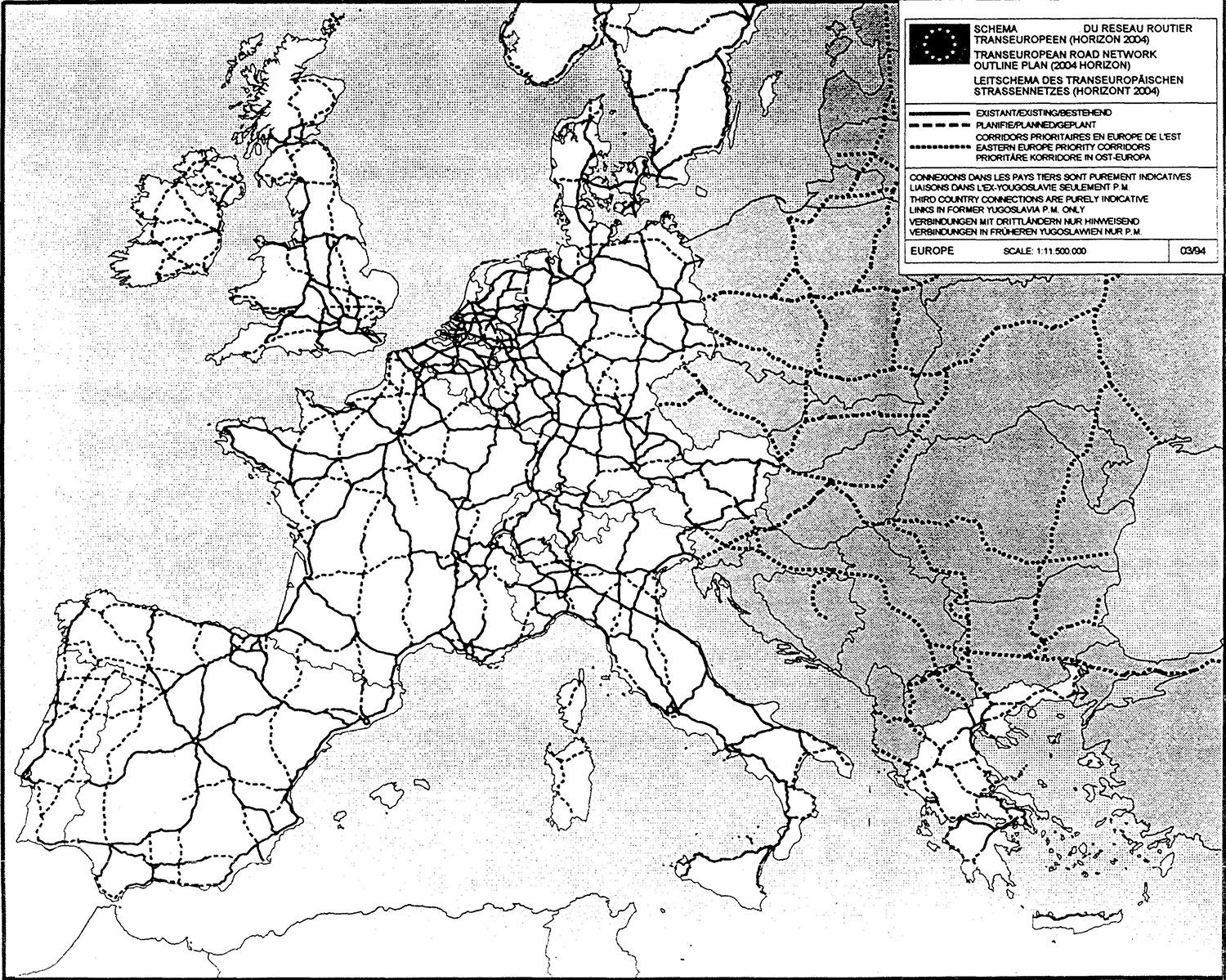
Figure 1: Trans-European road network outline plan. The map includes existing routes (black lines), planned routes (dashed lines), and eastern Europe priority corridors (dotted lines). EC proposal COM(94)106.
4 Hiding behind technically neutral paradigms, logistics unveils geopolitical and economic logics, stimulating the expansion of markets and the continuity of flows across and within them (Cowen 2014). With the progressive European enlargement, the original design has been extended over a greater space and enriched with further nodes, articulations and corridors (see Figure 2), aiming not only at further removing the spatial and technical barriers between the different member states’ transport systems, but also at “strengthening the social, economic and territorial cohesion of the Union and contributing to the creation of a single European transport area”. With its arrows pointed towards the external space, the nine corridors – aiming to “streamline and facilitate the coordinated development of the TEN-T Core Network” – expand Europe’s influence towards non-European countries, strategically organising an even greater homogeneous space that extends from the Atlantic Ocean to the Mediterranean and Black Seas. next...
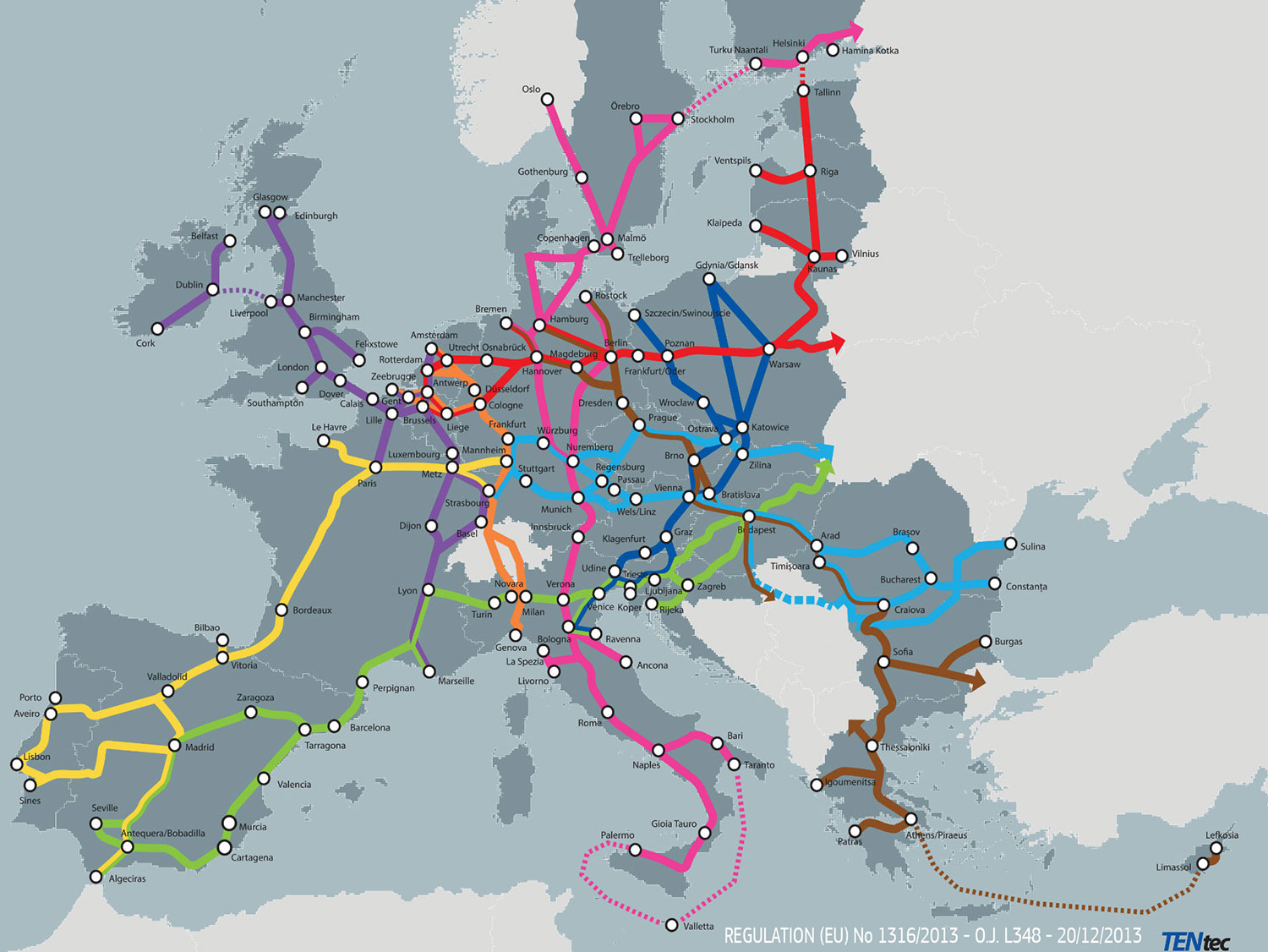
Figure 2: TEN-T core network corridors in Europe (in brown, the Orient/East-Med corridor that stretches from Cyprus and Greece to Germany). European Parliament and council, 2013.
III. Constructing networks: uneven and contested patterns
The European border and migration regime
5 Two aspects, however, deadened the general optimism surrounding the creation of a borderless Europe: the necessity to control the variegated flows traversing and circulating within Europe, and the grounded, uneven developments connected to the realisation of such transport networks. Regarding the first aspect, European institutions were well aware that no physical barrier could have been removed unless the European Community “found alternative ways of dealing with … public security, immigration and drug controls” (EC 1985). In this respect, the realisation of an internal borderless market could have taken place only with a parallel shifting and strengthening of border controls outside, across and inside the European territory, in order to compensate the increased freedom of movement with a similar increase in security measures (Walters 2004). The Schengen acquis operated precisely in this sense. The Schengen acquis operated precisely in this sense. Balancing between market and security imperatives, it gradually relocated border controls across the European territory, prompting states to harmonise the conditions for border crossing, safeguard their internal security and prevent the entrance and circulation of irregular migrants. In so doing, Schengen dispositions have not only created differentiated patterns of mobility between European citizens and third-country nationals, but they have also transformed international seaports, airports, and road/railway transit points into defence outposts against external threats (Walters 2002; Salter 2007). Far from being a mere “spillover” (Huysmans 2004), such dispositions, I argue, were a necessary corollary of the process of market expansion, as they allowed the safe and secure unfolding of economic, commercial and logistical operations. next...
6 Since the turn of the century, a complex assemblage of policies and practices has been put in place to strengthen internal and external borders and to manage the different mobilities traversing them, targeting in particular those flows deemed the most socially and politically dangerous, i.e. irregular migrations. From the creation of FRONTEX to the increasing deployment of military personnel and technological know-how; from the communitarisation and (failed) homogenisation of asylum issues to the establishment of the hotspot approach, such policies and practices have multiplied border mechanisms within and beyond the European territory, continuously redrawing the geographies of admission, circulation, detention, and deportation of migrants across Europe (De Genova and Peutz 2010; see also Figure 3). Rather than simply blocking migrant mobilities, however, these policies and practices have aimed – not always successfully – at governing and regulating them, in a delicate but conscious attempt to balance between labour market needs and socio-political recognition (Mezzadra and Neilson 2013; Cheliotis 2017). next...
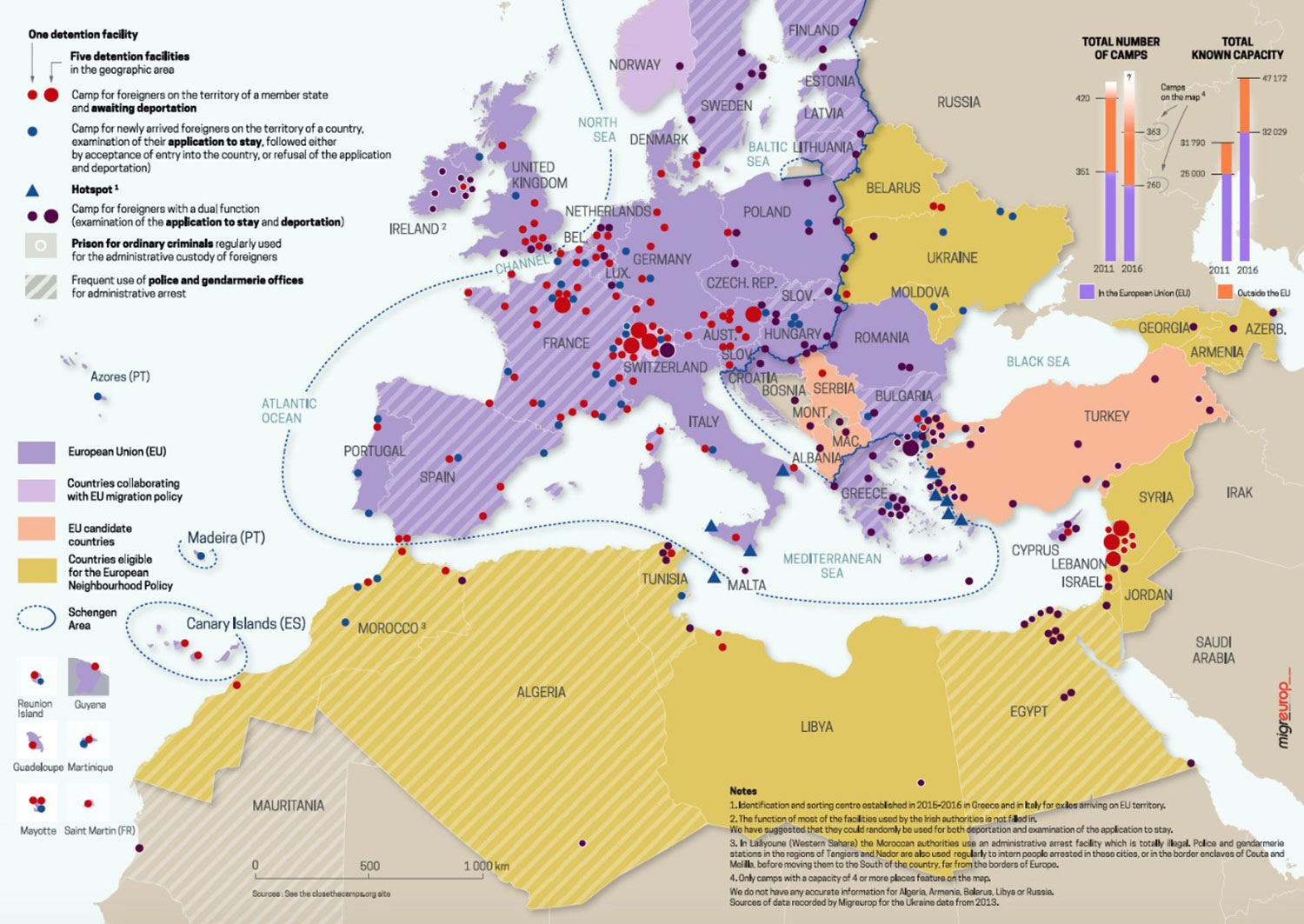
Figure 3: The main spaces of detention in Europe and beyond. Migreurop, ‘Map of Camps 2016. Scenes of Desolation at the EU Borders’, 2016. https://www.migreurop.org/IMG/pdf/migreurop_carte_en_hd-compressed.pdf
The development of the port system
7 The uneven and contested development of the logistical network constitutes another factor that attenuated the borderless imaginary behind the attempt to construct a European common market. Far from being smooth and undisputed, the homogenisation of European space through the development of a logistical network has been negotiated and contested on the ground, weakening or diverting its original purposes. With the relocation of production in developing countries and the extension of supply chains at global level, ports have acquired increasing importance in transnational commodity flows, turning into strategic nodes that could reduce spatio-temporal barriers between the productive sites and the consumption markets. Far from being smooth and undisputed, the homogenisation of European space through the development of a logistical network has been negotiated and contested on the ground, weakening or diverting its original purposes. Within this framework, ports could no longer be conceived as independent hubs, but rather as part of a complex system of intermodal transport networks that streamline global and regional supply chains (Notteboom and Rodrigue 2005; Jacobs and Notteboom 2011). In this respect, neoliberal dynamics have affected not only container seaports, which play a major role in global logistical networks, but also small- and medium-sized ports, making them increasingly interconnected within the European space. next...
8 Although located in the south-western periphery of the country, throughout the 1990s the port of Patras has developed, together with that of Igoumenitsa in the north, as one of the main transit hubs for commercial routes connecting the Middle East to Northern Europe through Italy. The TEN-T founding law and its successive modifications officially recognised its importance, including Patras among the category A seaports (and later within the core network) for its international relevance and potential contribution to the development of a European intermodal transport network (European Parliament and Council 1996, 2013; see also Figure 4). Within this framework, the port experienced a tremendous increase in transit traffic, leading to its expansion. next...
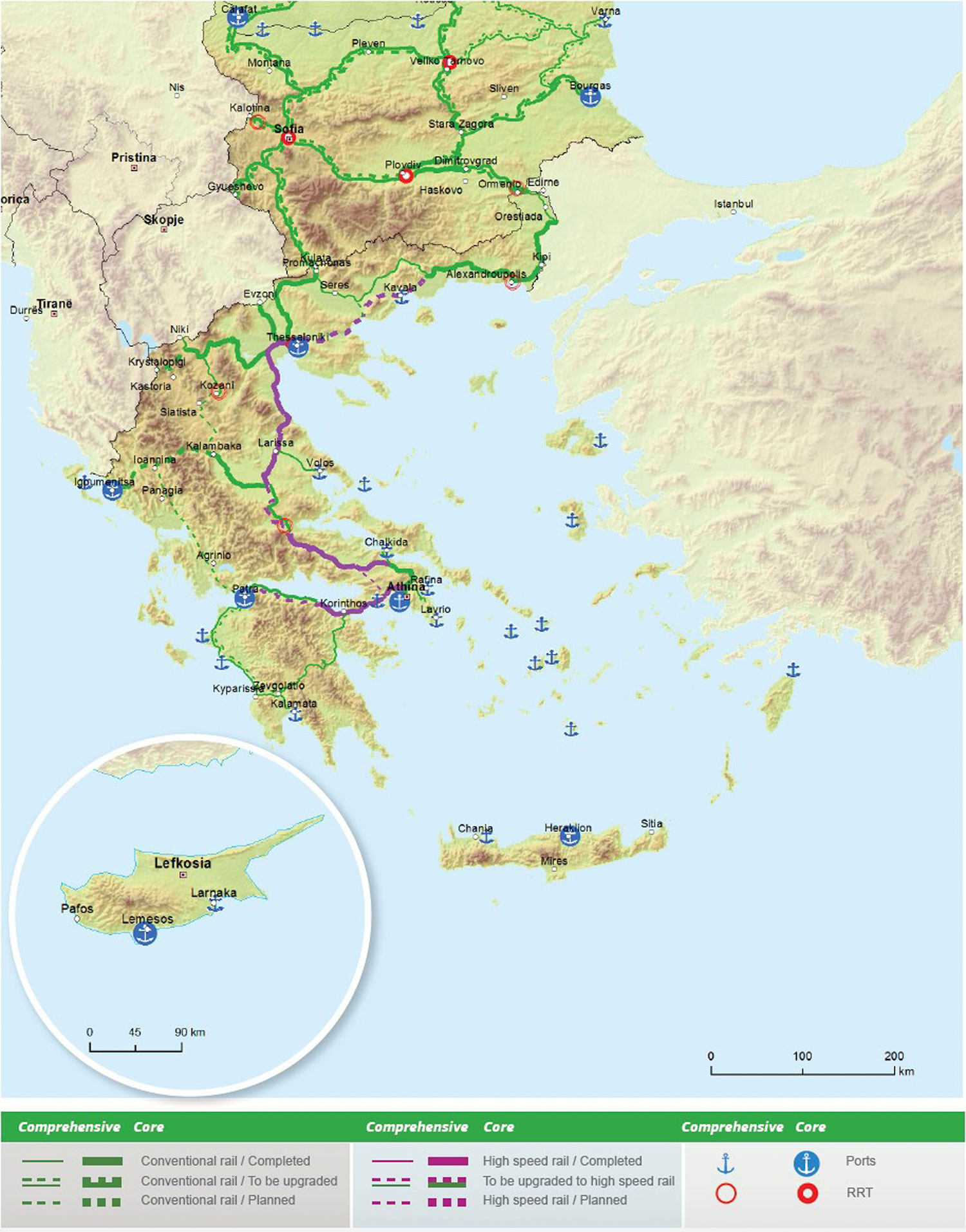
Figure 4: Core and comprehensive ports and rail-road terminals. European Parliament and Council, 2013.
9 Two factors, in particular, determined an unscheduled growth in transit traffic (see Figure 5), which the port and the whole city could have barely sustained. First, the geopolitical instabilities in the Balkan region rendered most of its connecting roads impassable, diverting freight networks between the Middle East and northern Europe through the Greek ports of Patras and Igoumenitsa (EC 1995). However – and this is the second reason – the port of Igoumenitsa was at that time only a small installation serving mainly Corfu and Brindisi, with limited maritime connections. Although experiencing a similar process of expansion in the framework of the TEN-T, the port of Igoumenitsa was at that time incapable to bear such a load of traffic, because of its limited capacities and the scarce road connections towards Thessaloniki. Given the increased sea traffic to and from Italy, the EC recognised that there was “a particular need for Greece to develop stronger and more efficient maritime connections as an alternative to long and difficult overland routes” (EC 1995). next...
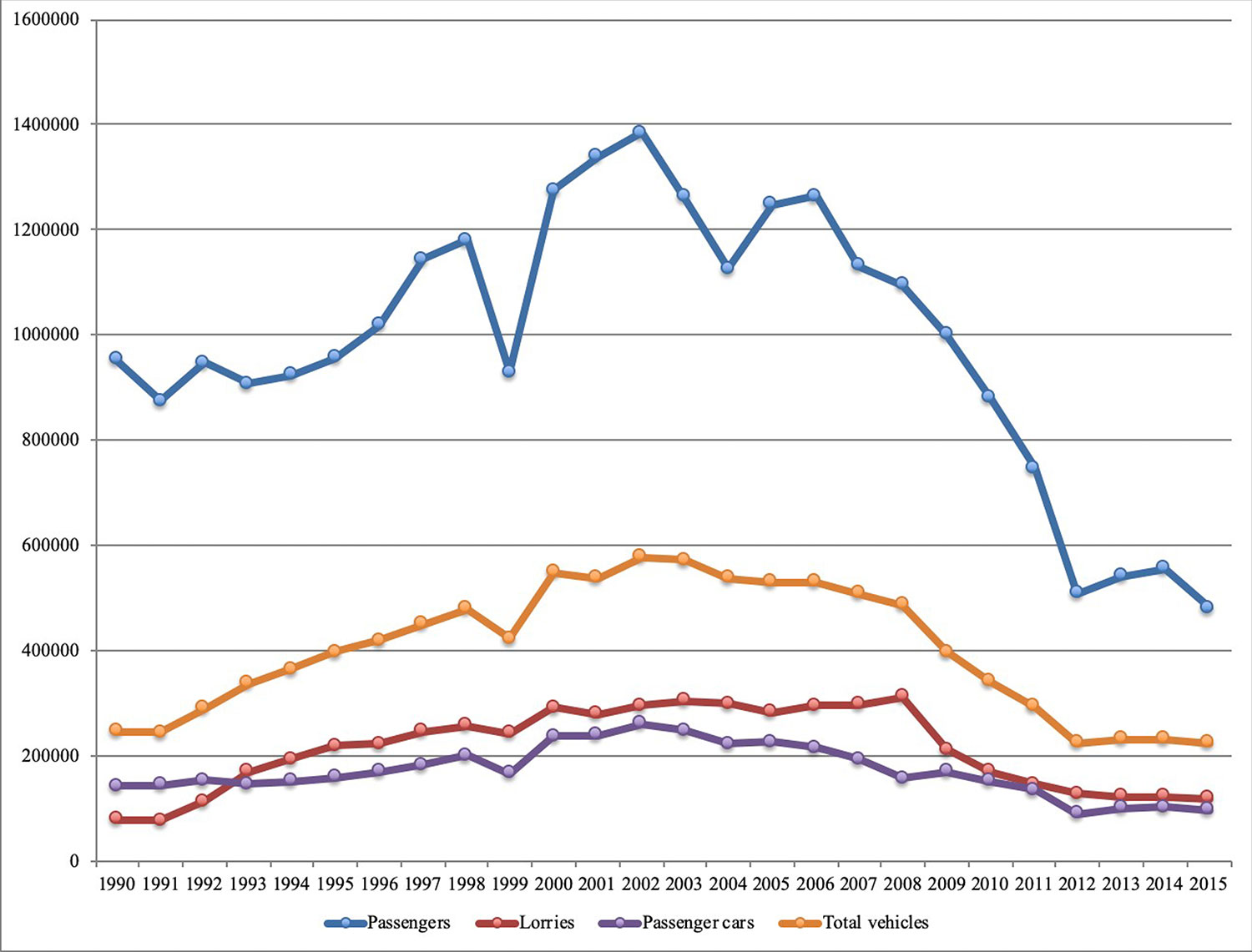
Figure 5: International passenger and truck traffic through the port of Patras, 1990-2015. Elaboration from Pappas 2012 and Patras Port Authority website (OL.P.A.).
10 Due to the then high traffic demand and positive market prospects, the idea of expanding the port of Patras looked justified and feasible, not only for local experts but also for the European institutions that approved and financed the project. In their minds, Patras could have developed as the main transit hub for commercial routes connecting Turkey to Greece (through Thessaloniki, Athens and then Patras) and eventually to the northern European countries (through Italy). The southern periphery of the city was eventually chosen as the most advantageous location for the expansion of the new port, as it could have provided more accessibility, further expandability and easier interconnectivity with the surrounding road and rail networks. Despite the initial positive projections, in the long run the port of Patras lost its leading position within the port system. Despite the initial positive projections, in the long run the port of Patras lost its leading position within the port system. When the number of lorries reached a first peak in 2003, exceeding 300,000 units, the port was a notable joining link between the Middle East and Eastern Europe eastwards, and Italy and the rest of Europe westwards. During the construction of the new port, however, a series of geopolitical, economic and logistical events seriously undermined its role in the lower Adriatic corridor. By the time of the official inauguration of the new port in July 2011, the end of the Yugoslav Wars, the parallel expansion of the ports of Igoumenitsa and Piraeus, and the completion of the Egnatia Road connecting Igoumenitsa with Thessaloniki and eventually Turkey had opened new and faster traffic routes along the Balkans and across Greece, cutting off international transit traffic through Patras. The decline in transit traffic downsized the initial project for the port expansion: of the nine berths initially envisaged in the projects, only five were actually realised, while the remaining ones (Figure 6) will probably never be completed. next...
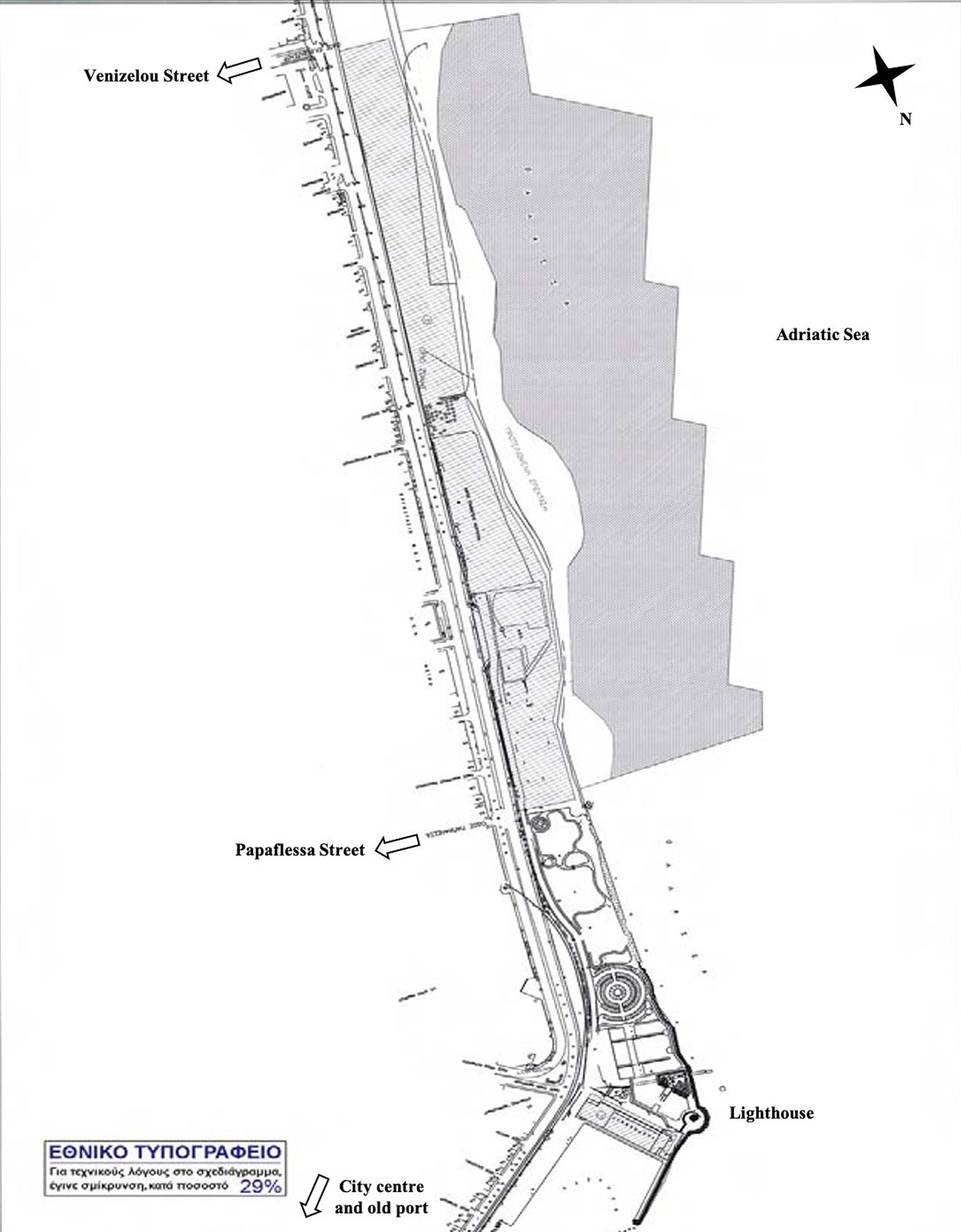
Below, Figure 6: The four berths initially included in the projects but never realised (in grey). Law 4081/2012, approved masterplan of Patras 2003 (explanations added), 2012.
The development of rail and road infrastructures around Patras
11For the port system to effectively link production and consumption sites, the railway and road networks should be likewise conducive to seamlessly interconnect land and sea nodes. Within the TEN-T framework, two different projects for the development of the railway network around Patras were envisaged: the upgrade of a mixed railway connection for passengers and freight between Athens and Hamburg, via Sofia, Budapest, Vienna, Prague and Berlin (TEN-T project no. 22), and the construction of the Ionian/Adriatic intermodal corridor, connecting the coastal towns of Igoumenitsa, Patras and Kalamata in southern Peloponnese (TEN-T project no. 29). Both projects should have guaranteed the seamless circulation over a uniform and homogeneous space stretching like a dotted, yet interconnected, sequence from south-eastern to northern Europe, encountering no resistance from state borders (see Figure 7). An enormous process of modernisation and standardisation of the Greek railway system was nonetheless necessary to connect Greece to the rest of Europe. The Greek railway network suffers indeed from the historical co-existence of two incompatible track gauges and from the lack of electrification, especially along its peripheral lines. Despite the rescaling of political and financial responsibilities at European level, the burst of the crisis blocked or delayed most of the projects. In relation to the TEN-T project no. 22, as of 2016 modernisation works had interested the section Athens-Kiato, a small village 100 km from Patras, but the remaining distance to Patras could be covered only by car or coach. Besides, discussions had been still open on whether and where the railway line should cross the city centre and reach the new port, potentially generating further economic and environmental problems. With regards to the TEN-T project no. 29, the northern section from Ioannina-Antirrio-Patras was cancelled (INEA 2012), while the southern section Patras-Pirgos-Kalamata was “significantly delayed because of administrative and internal organisational issues” (INEA 2010), and then postponed “due to the adverse financial conditions prevailing in the Greek economy” (EC 2012). next...
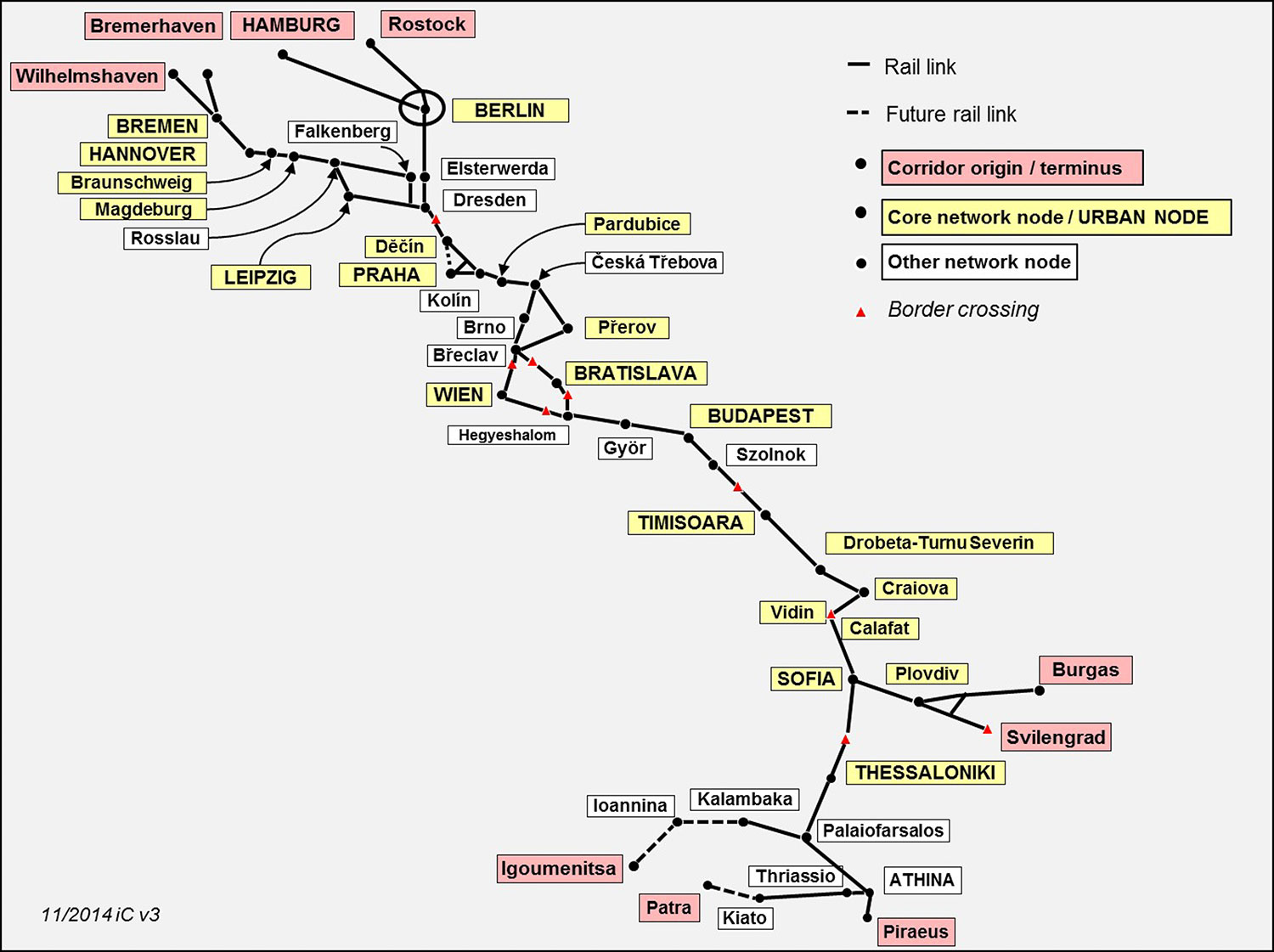
Figure 7: Rail alignment of the Orient/East-Med Corridor. European Commission, 2014.
12 The development of the Greek road system has been more successful, even though it has intertwined with processes of liberalisation and privatisation. As with the railway projects, European institutions saw in the development of the Greek road network a fundamental node to connect the south-eastern region (terminal point of the maritime links from China and the Far East) to northern Europe through an uninterrupted corridor traversing crucial junctures and imperceptible border crossings (see Figure 8). For its realisation, European, national and private capitals have been used, with their different, at times contrasting, interests and priorities. Since the 1990s, indeed, governments of every political leaning have employed public-private partnerships (PPPs) in order to abide by the increasingly stringent budgetary ties imposed by the EU and, at the same time, to implement the infrastructural projects necessary to project the country towards the global market (Kitsos 2014). With the burst of the economic crisis, the Greek state found itself incapable of expanding its already high public deficit, thus accelerating the resort to private participation in the implementation of public works. Among the works financed through the first round of PPPs is the Rio-Antirrio Bridge, an astounding infrastructural project that connects Patras’ northern neighbourhood of Rio, to mainland Greece in Antirrio, annihilating spatio-temporal barriers between the two shores. Following the success of the project, the collaboration between the government and private capital for the financing of public works has grown stronger. The second round of PPPs involved the modernisation of the so-called “axes of development”, i.e. the quadrilateral area between Patras, Athens, Thessaloniki and Igoumenitsa/Ioannina as part of the TEN-T core project no. 7, with the aim of connecting the main Greek cities and ports between them and with the rest of Europe. However, the second round of PPPs did not prove as successful as the first one. However, the second round of PPPs did not prove as successful as the first one. The advent of the economic crisis resulted not only in the collapse of revenues, due to the reduction in traffic volumes and the emergence of a “no-pay movement”, but also in the renegotiation of the agreements, with substantial delays in the construction works and further injections of money from European and national institutions (Nikolaidis and Roumboutsos 2013; Domingues and Zlatkovic 2015). Despite the problems, the “axes of development” were eventually realised, but the incomes generated from the transit have been secured in private hands for the next decades, elucidating who the beneficiaries of these works really are. next...
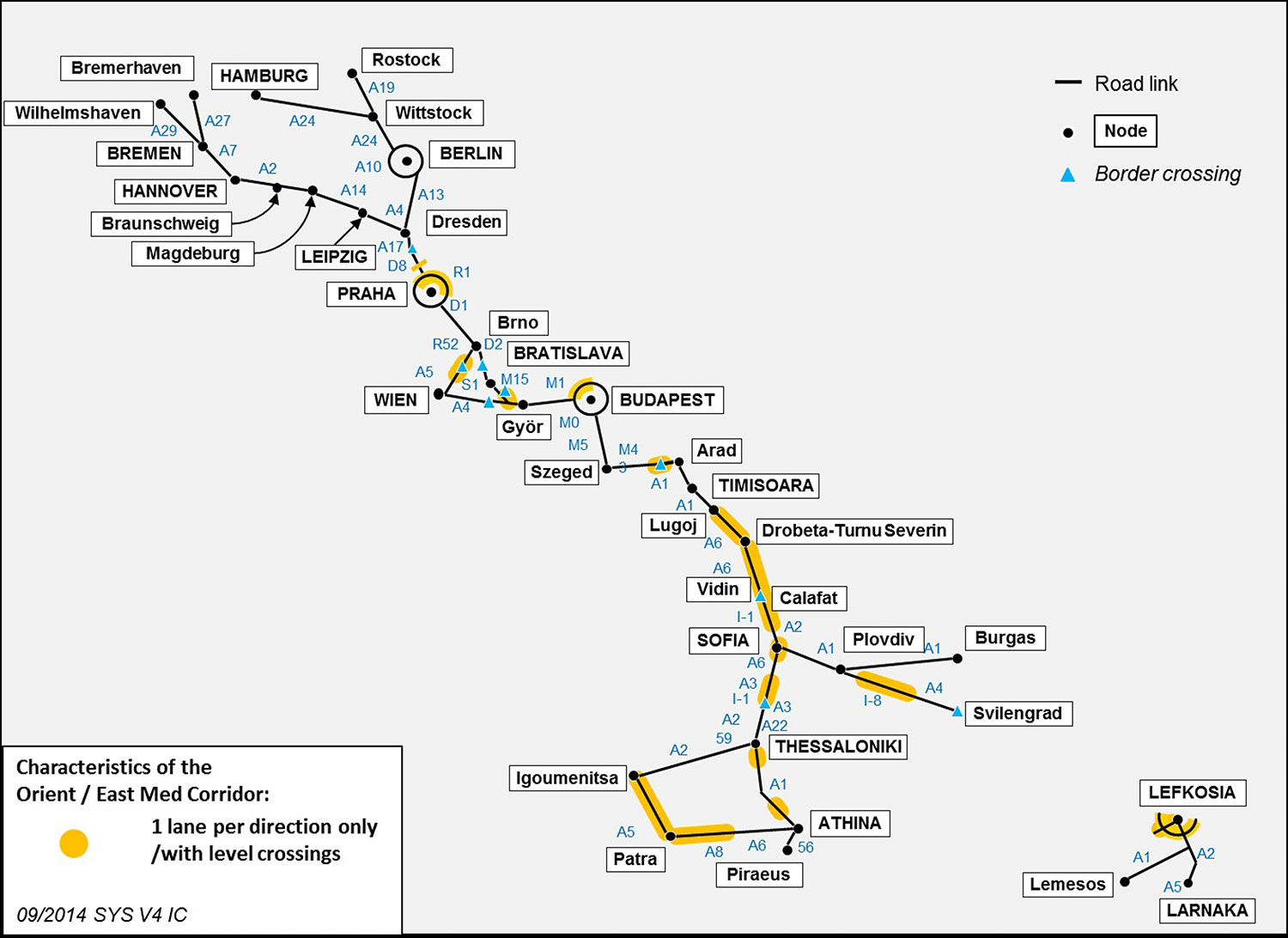
Figure 8: Orient/East-Med Corridor Road Network. European Commission, 2014.
13 Despite its borderless intentions, the implementation of a Europe-wide transport network has often been subject to peculiar historical and geographical obstacles on the ground that hindered the realisation of the original projects, generating uneven and discontinuous patterns. Driven by optimistic figures, the expansion of the port of Patras eventually suffered from geopolitical developments that eroded its international transit traffic, turning it into a regional harbour. Similarly, the railway and road networks in and around the city experienced peculiar and uneven historical configurations, complicating their current patterns of development. The advent of the economic crisis further delayed or jeopardised the construction of rail and road connections in southern Greece, making Patras increasingly isolated from the main logistical networks. next...
IV. Migrant mobilities
From the old camp to the factories
14 Although moved by other determining factors – the extension of social networks, the access to economic possibilities, the uneven harmonisation of asylum procedures throughout the EU, and the continuous change in available transit routes and spaces – the presence of migrants in Patras seem to have followed the outward path traced by the regional supply chains – with different spatio-temporal configurations, nonetheless. In the early 1990s, as Patras was becoming an important freight hub within the TEN-T, the first migrants appeared in the city, re-appropriating empty spaces around the port area and infiltrating the cracks of the logistical networks. The presence of migrants in the city was significantly different from the migratory changes that the whole country was experiencing. The presence of migrants in the city was significantly different from the migratory changes that the whole country was experiencing. While Greece, after a long-lasting process of emigration, was starting to attract migrants from neighbouring countries (mostly Albania) to support its fragile economic development with their often undocumented, underpaid and overexploited work (Cheliotis 2017), Patras was also developing as an important transit route for undocumented migrants, willing to surreptitiously embark towards the Italian ports of Venice, Ancona, Bari or Brindisi and, from there, continue their journey towards another Europe (see Figure 9). next...
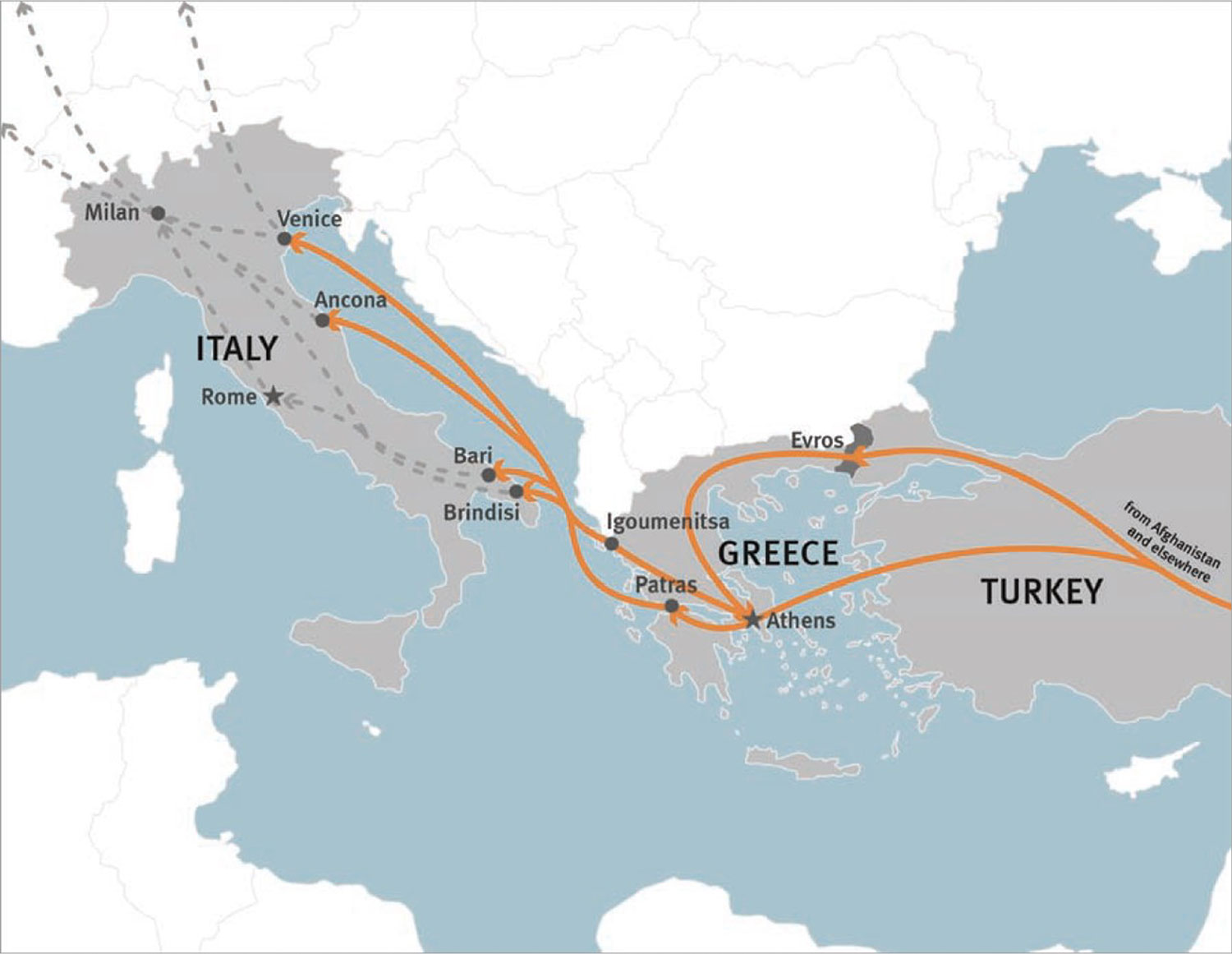
Right, Figure 9: Migrant routes through Greece. Human Rights Watch, 2013.
15 Fleeing from the Iraqi war and the subsequent escalation of violence in south-eastern Turkey, the first Kurdish migrants started to occupy disused buildings and an abandoned train depot around the port area, precariously settling in the city but determined to escape it without leaving traces. At the turn of the century, there were supposedly about 500 Kurdish people around the port area, with another 1,500 dispersed in the city (Papadopoulou 2003). As their presence increased, so proceeded the spatial occupation of abandoned buildings in the immediate proximities of the port, which were periodically cleared out by local authorities. An “old, multi-story, boarded up hotel … scheduled for renovations that were never completed because of the owner’s financial difficulties” (Spinthourakis and Antonopoulou 2011: 78) and the wrecked fish market of the city were turned into a self-organised village, with small stores, places to cook, and recreational areas. It is here that the infamous migrant camp of Patras took shape. When the municipality began to renovate the old fish market in the late 1990s, migrants moved to an open green space in the northern end of the port area, surrounded by a wealthy residential area overlooking the beach and the marina. It is here that the infamous migrant camp of Patras took shape. Like its homologous in Calais, the camp came to be known as “the jungle”, evoking a “developmental” distinction between the civilised world of the city and the pre-civilised world of the state of nature (Rigby and Schlembach 2013). Another smaller settlement appeared few hundred metres north, in the vicinity of a wild and uncontaminated area. Far from being fortuitous, the location of the camps adapted to the freight mobility around the port area: both settlements were indeed strategically located in the proximity of two crossroads where lorries would necessarily stop before accessing the port (Figure 10). next...
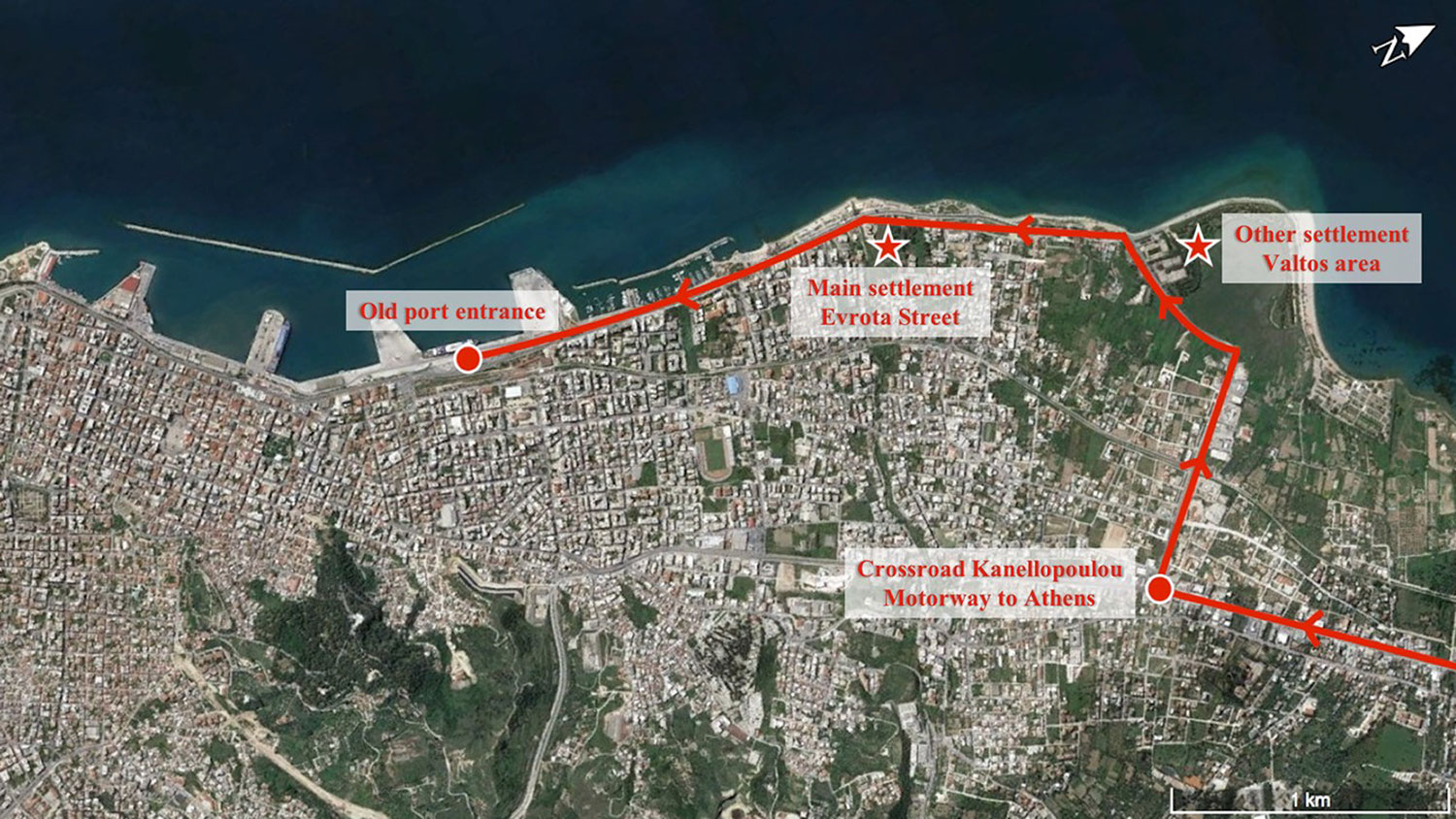
Figure 10: Location of migrant settlements in relation to the logistical networks. Elaboration from Google Earth.
16 Since the 2000s, however, the number and composition of migrants have changed significantly, with the decrease in Kurdish presence and the parallel, steady increase in Afghan migrants, due to the socio-political instability in their country. While the port was experiencing a staggering increase in transit traffic, with thousands of lorries coming and going through the city centre every day, the intensification of border controls and the slow but continuous arrival of migrants turned Patras (and increasingly Igoumenitsa) into bottlenecks, forcing migrants to protracted waits before their coveted occasion to escape would finally materialise. Between 2007 and 2008, the main camp resembled every inch a small village, with a mosque, a small sports ground, some shops, and about 200 scattered tents and sheds hosting around 1,500 migrants. The increasing presence of migrants caused growing tensions not only with local authorities and residents, but also with urban developers and real estate agencies, preoccupied by the potential reduction in future investments and the lowering prices of properties and rents (Lafazani 2013; Mantanika 2009). Police interventions to intimate migrants to leave the settlement escalated, engendering in some cases violent responses (King 2016). After a failed attempt to dismantle it, on the early morning of July 12th, 2009, the police closed the main access routes to the port area and entered the camp, evacuating or arresting its remaining occupiers, and eventually setting it on fire. The destruction of the camp reshaped the geographies of migrant settlement and mobility within the city and the whole country. Those who had previously abandoned the camp or managed to avoid arrests sprawled into the city, occupying abandoned houses or spreading through other smaller settlements around the port area (Hole 2012). Others moved to the port of Igoumenitsa or to the border with Albania, in the attempt to leave the country through other routes. By 2008, the port of Igoumenitsa, now completely renovated and connected to the Egnatia Road, had indeed started to develop as an alternative escape route for migrants, especially after the intensification of police controls in Patras (Triandafyllidou and Maroukis 2012). The informal settlements that appeared and gradually expanded on the renowned “mountain-jungle” – the slope at the edge of the town that overlooks the port – came to host hundreds of migrants at once, attracting the opposition of far-right protesters and the violence of the police (Kuster and Tsianos 2016). next...
17 Despite the opening of new escape routes and the periodical police raids, Patras has never ceased to function as a transit station for migrants, attracted by the possibility of living in a relatively inexpensive way and leaving independently through the loopholes of the logistical network. Although diminished in numbers, by the late 2000s migrant composition had changed again, with the arrival of the first Sudanese migrants. Their establishment in the city initially overlapped with the presence of the other migrants, generating renovated processes of spatial re-appropriation. While few hundred Afghans remained in the old port area until the new one started its operations in July 2011, about 200 Sudanese occupied the then-abandoned train station of St. Andreas, halfway between the two ports, and other smaller buildings around it (Spinthourakis and Antonopoulou 2011; Hole 2012). The relocation of port activities re-compacted the spatial fragmentation of migrant occupations, attracting the migrants left in the city. In the remains of the abandoned industrial area in front of the new port, migrants have slowly re-appropriated new spaces, which now constitute their transit station along their journey towards Italy and the rest of Europe. In the remains of the abandoned industrial area in front of the new port, migrants have slowly re-appropriated new spaces, which now constitute their transit station along their journey towards Italy and the rest of Europe. Tragic aftermath of the 1980s process of de-industrialisation and relocation of production at global scale, these deserted complexes have become home for Afghan and Sudanese migrants, who have transformed them into their own – albeit temporary and precarious – living place. Three factories, in particular, provide shelter for the different migrant groups: the former textile complex of Peiraiki-Patraiki (Figure 11), at that time occupied by about 50 Sudanese; the paper mills Ladopoulos (Figure 12), hosting about 40 Tajik Afghans; and the wood factory AVEX (Figure 13), a smaller building accommodating about 60 Hazara Afghans. Whereas nationality and ethnicity seem to constitute powerful organising forces inside the factories, in the dilapidated premises of VESO B (Figure 14) – part of an industrial group that used to produce oils, soaps and wines – these forces are subverted, and migrants from different backgrounds gather and relate to each other. Given its open-air structure, Sudanese and Afghan migrants have here reconstructed their everyday through parleying, playing and praying, creating an intermingled network of relations and connections that traverses national and ethnic differences. next...
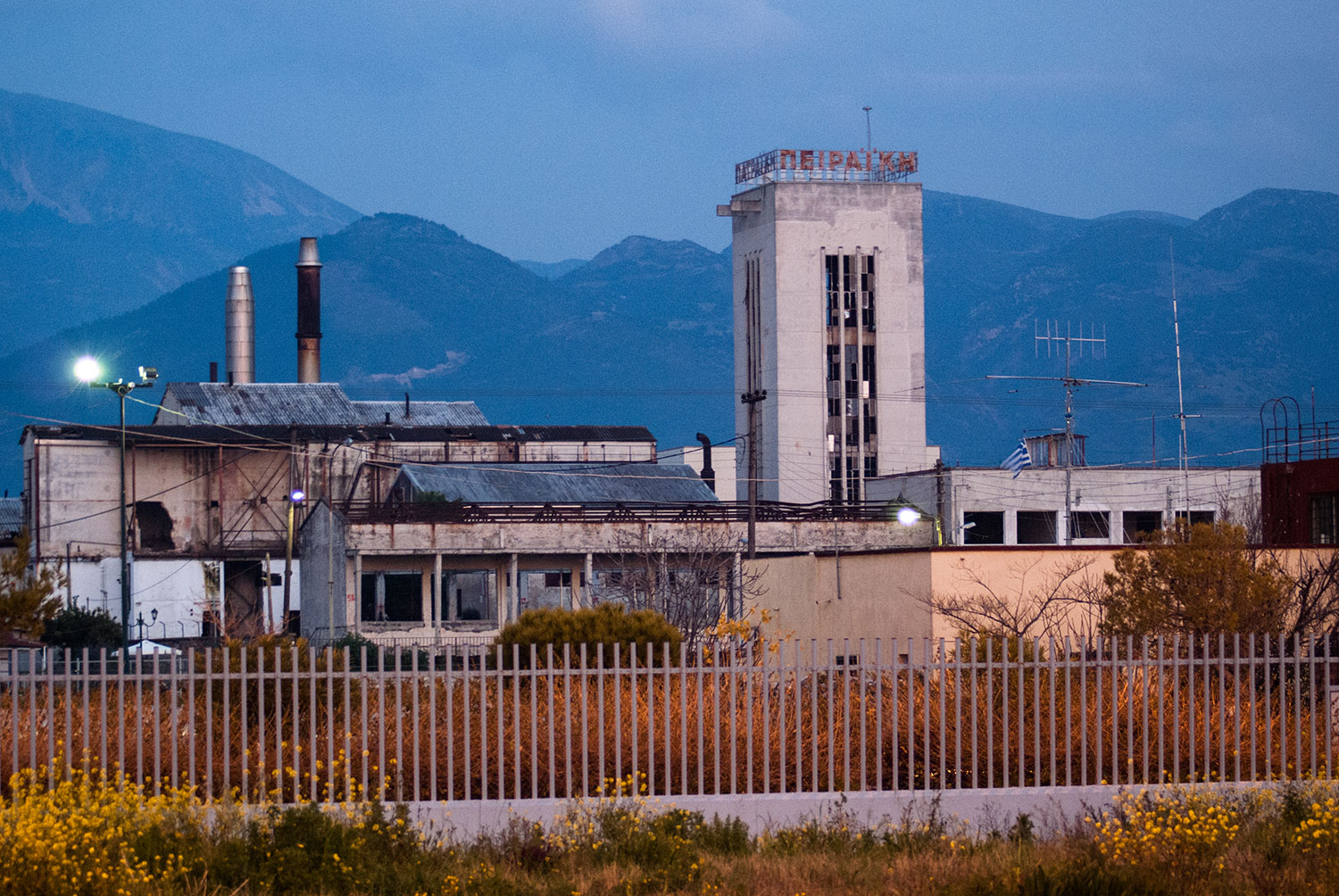
Figure 11: The Peiraiki-Patraiki complex, behind the new port’s external fences. Photo, Marco Mogiani, 2015.
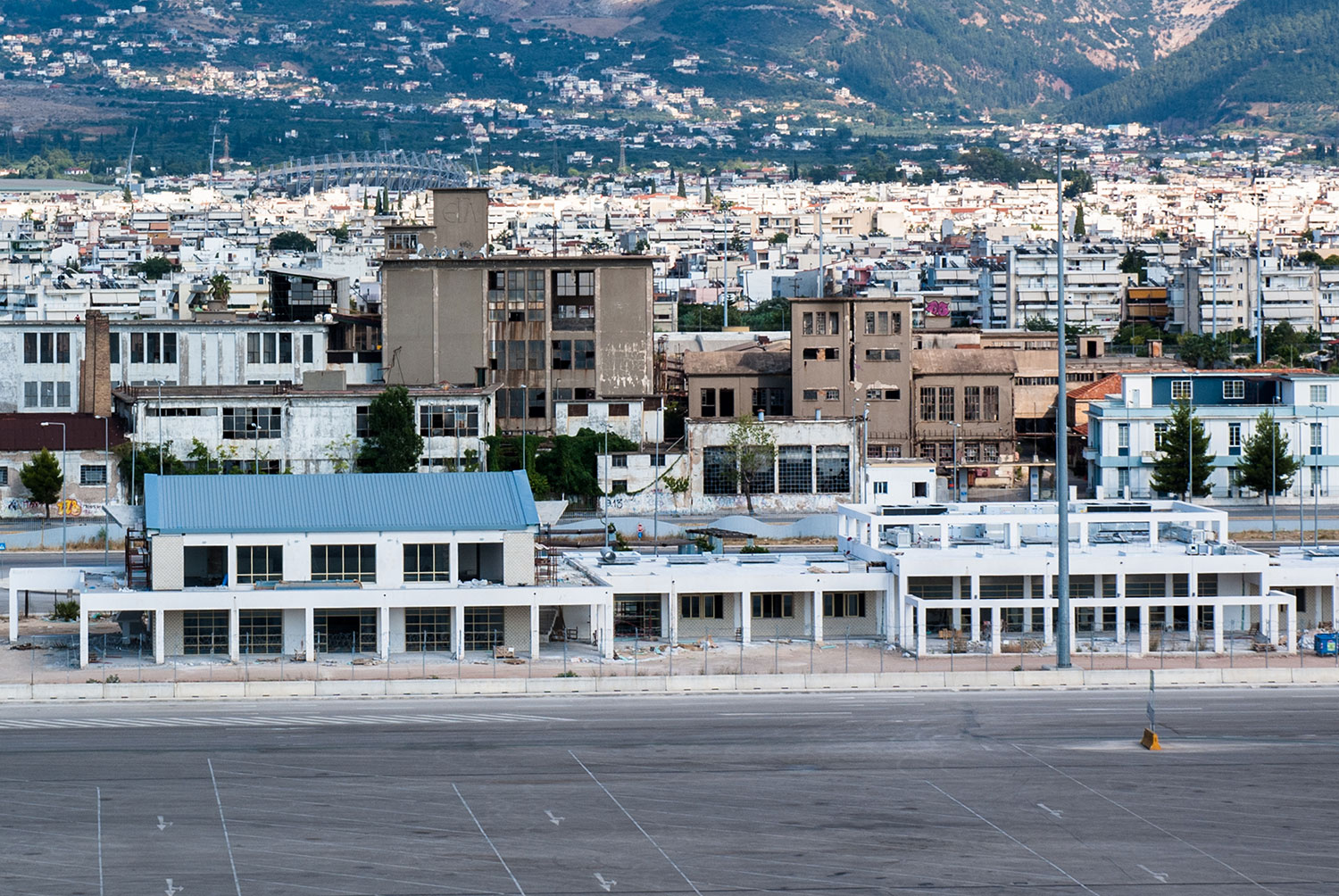
Figure 12: The paper mill Ladopoulos (brown building), behind the port area. Photo, Marco Mogiani, 2015.
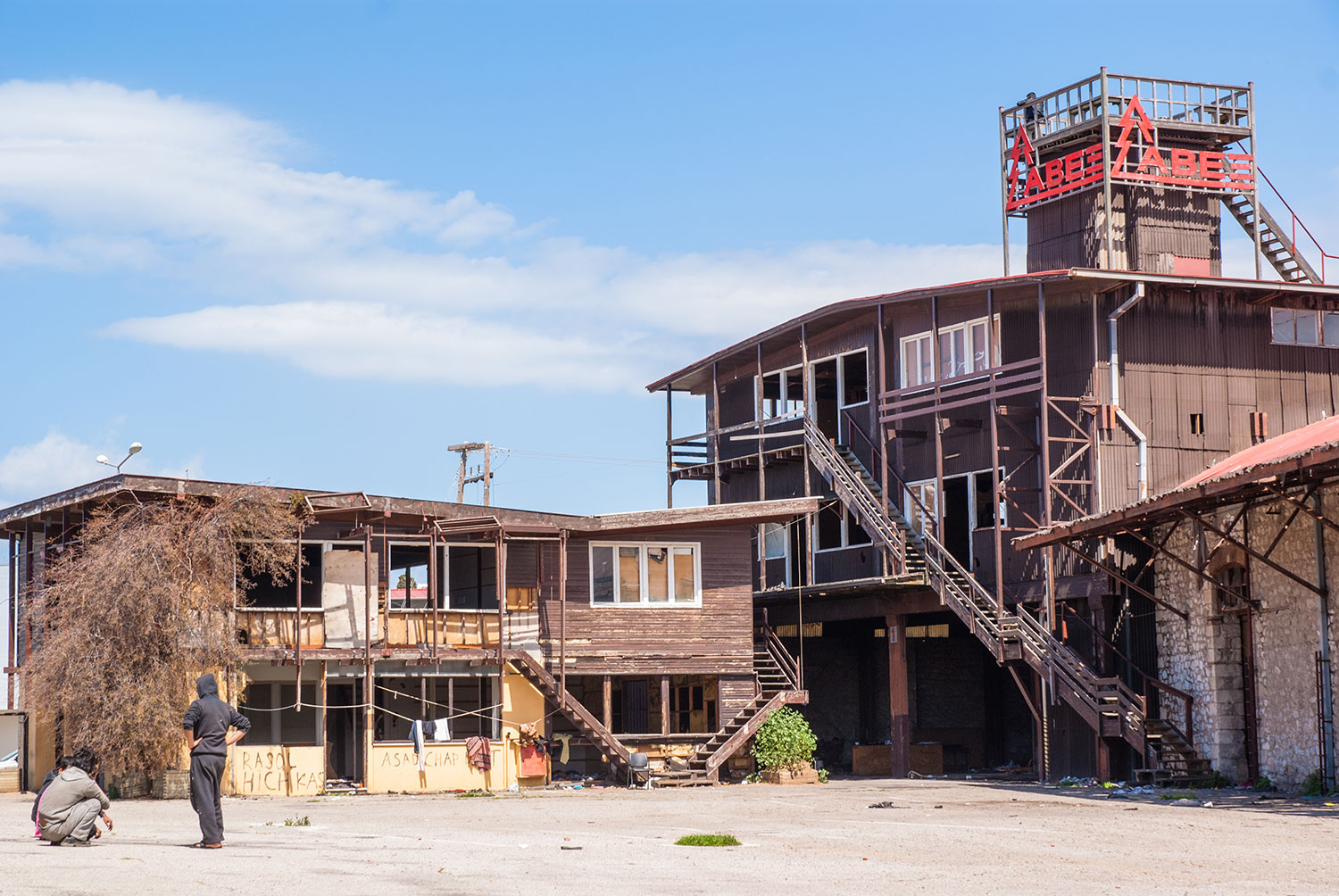
Figure 13 below: North-eastern section of the wood factory AVEX. Photo, Marco Mogiani, 2015.

Right, Figure 14: The internal area of the factory VESO B. Some remnants of dilapidated walls are visible. On the background, the tower of Peiraiki-Patraiki. Photo, Marco Mogiani, 2015.
The re-appropriation of urban and logistical spaces
18 The re-appropriation of empty spaces within both the city and the logistical infrastructure, I argue, has allowed migrants to navigate the border area and trace overlapping escape routes to another Europe. This process of spatial re-appropriation has patiently developed not simply through the occupation of the abandoned factories, but also through an enhanced knowledge of the urban surroundings, the spatial and mental occupation of the unused spaces of vehicles, and a more impalpable re-adaptation of migrants’ own body and language. The occupation of abandoned buildings has been accompanied by an extensive knowledge of the streets, alleys and shortcuts surrounding them, allowing migrants to easily escape from the daily pursuits, hide during police intrusions, or simply access the port area unnoticed. The occupation of abandoned buildings has been accompanied by an extensive knowledge of the streets, alleys and shortcuts surrounding them, allowing migrants to easily escape from the daily pursuits One day, I was walking along a cross street around the new port, when two migrants came towards my direction, chased by a police car. When they saw the police entering that same narrow street, they started to run, followed by the police car which, however, was slowed down by the rough road. At the end of the street, interrupted by the same railway line that the uneven development of the TEN-T left abandoned, the two migrants proceeded along their way, while the police car, unable to continue, had to turn back, aborting their operation.While the elaborated knowledge of the maze of passages and shortcuts that ramify from the factories allows migrants to escape promptly from police chases, avoiding document checks and potential arrest, the different location of the factories along the coastal road results in the elaboration of various, more or less successful, tactics to infiltrate the logistical networks. On any given day, the occupiers of Peiraiki-Patraiki would remain hidden in the proximity of strategic crossroads around the southern entrance of the port, waiting for lorries to stop at the traffic light before briskly dashing off in the attempt to crawl underneath their bellies. Migrants in the other two factories, instead, would often gather together, waiting for the timeliest moment to scatter in small groups, jump the fences, and quickly find their way to sneak under the lorries resting in the parking lot or queueing at the security checks. next...
19 This process of mental and material re-appropriation extends from the factories and the surrounding roads to the variegated routes and vehicles that migrants surreptitiously employ along their clandestine journey, opening up new ways of contemplating (im)mobility and (in)visibility. Being deprived of the possibility to decide on the modalities of their own mobility, undocumented migrants are compelled to parasitically infiltrate transport networks and utilise alternative and dangerous routes that are not designed for corporeal mobilities (Martin 2011). In the approaching and unfolding of the journey, invisibility acquires a paramount importance, as it allows migrants to eschew the threatening assemblage of security measures that controls and protects the transport network. While the travel of legitimated passengers and goods is enclosed within a protective capsule, that of undocumented migrants remains hidden in cramped spaces, turning vehicles and routes into productive sites of politics and struggles (Walters 2015). Like mobile passengers, vehicles have become the locus of multiple processes of bordering, especially in crucial articulations like ports, which need to guarantee a constant degree of circulation with relatively efficient security standards. As vehicles turn into border zones, migrants hone their knowledge about the advantages or risks connected to certain routes, the price of smuggling networks, and the tactics to evade surveillance systems and police checks (Martin 2012; Trimikliniotis, Parsanoglou, and Tsianos 2016). Rather than passively succumbing to the multifarious assemblage of apparatuses of control, migrants have developed and put in practice a myriad of “acts of refusal, escape and trespass” (Walters 2015: 483) to fulfil their dreams and reach their destinations. Such acts occur through other, often hidden and imperceptible, forms of re-appropriation that involve not only the spatial materiality of vehicles and streets, but also more impalpable, yet no less complex or contradictory, corporeal and mental imaginaries. In juxtaposition with the spectacularised scene of the border regime (De Genova 2013), migrants have clandestinely occupied, through their bodies and minds, those empty yet strategically crucial spaces, turning them into vital links along the chain that connects their protracted and extenuating journey to Europe. next...
20 The process of spatial re-appropriation thus extends to the micro level, entailing the physical and mental control of one’s own body, as well as the capability to disguise it and make it invisible to the alert glance of the officer (Galis, Tzokas, and Tympas 2016). In the everyday ritual of border crossing, body performance acquires a crucial importance. The body should conceal uncertainties and camouflage imperfections, or it might betray the migrant (Khosravi 2008). The darkness and dirtiness of their clothes constitute a deceptive subterfuge that offers migrants a better protection during the security checks, making them less visible when hiding inside lorries or during their night attacks towards the port area. One hot summer day, after having lunched together, migrants at AVEX suddenly spread away, getting ready to approach the port area. One of them walked away to change his clothes, putting a dark grey sweater on top of his t-shirt, and a pair of greasy tracksuit trousers over his short ones, to better disguise himself under the dingy bellies of the lorries. In the everyday ritual of border crossing, body performance acquires a crucial importance. The body itself must be trained, rendered fit for running to and from the port area and flexible enough to slide underneath lorries and enter into its cramped spaces. In this respect, age and physical conditions can generate differentiated patterns of mobility, producing gendered distinctions among migrants. The amount of risks involved and skills required in the daily “border game” (Andreas 2009) necessarily rewards vigorous, healthy, and brave young men while putting elderly, corpulent, or crippled bodies out of contention. Young age can represent an important survival strategy: not only is the body fitter to sneak inside the tiny spaces of the lorry or to escape police chases, but it can also be accompanied with more rights, especially when looking underage. The passing of years, instead, reduces migrants’ possibilities to escape, exacerbating a personal sense of culpability and failure. Similarly, temporary injuries might protract the permanence of migrants in the settlements, leading to a potential aggravation of their legal status. During one of my regular visits to the factories, an Afghan migrant expressed his disappointment for the intensification of the pain on his injured knee after a fall from the port fences. The temporary impossibility to join the others in the daily attempts at crossing the border would have had, in his mind, concrete repercussions not only on his legal situation – as his temporary permit was soon expiring – but also on his future chances to economically support his family from Europe. next...
21 Just as any process of physical domination over space cannot occur without having been previously conceived and visualised in the mental schemes of urban planners and architects (Schmid 2008), so the re-appropriation of one’s own body cannot properly take place without a simultaneous resolute self-control over one’s mind. It is from the mind, in fact, that nerves and senses depart to comprehend and dominate the body, regulate its movements, and grasp its immediate surrounding area, in order to acknowledge and seize it (Lefebvre 1991). The most direct instrument to perceive, decode and command reality is language: through language, every person may “establish … the empirical orders with which he will be dealing and within which he will be at home” (Foucault 1994: xx). Migrants re-appropriate surrounding objects and everyday activities by giving them a unique name, (re)inventing language and subverting its significance. Migrants re-appropriate surrounding objects and everyday activities by giving them a unique name, (re)inventing language and subverting its significance. “We don’t speak English, Farsi or Greek, but only the language of how to go under a truck”, an Afghan migrant once told me when I approached and introduced myself to a group of young men at the Ladopoulos factory. The first word that I stumbled upon in this bottom-up dictionary is “dingle”, which came to signify either the axle of the lorry where migrants hang from or, more generally, the act itself of sneaking and hiding underneath it. In one case, the term also stood out as a nickname for one of the migrants, the most determined among the group in performing such activity, or in “doing the dingle”. Like every language, even migrants’ one is subject to synchronous divergences among groups and diachronic alterations through time, attesting the “extraordinary ‘mobility’ of words” (Gandolfi 2013: 21). The word “dingle” acquired a specific meaning especially among Sudanese migrants, while Afghan groups did not have a particular word at the time to describe that activity. Another ethnographic research conducted some years earlier noticed that, in conjunction with the already popular term “dingle”, migrants’ “daily attempts to leave are termed their ‘work’, chasing after trucks at strategic points near the port and the main roads” (Hole 2012: 30). In 2017, other migrants were instead referring to the same practice as “the game”, as if a full-time essential occupation turned into a recreational, even entertaining activity, reminding of Andersson’s account of hunters and preys (2014). next...
22 Just as the European dream of a single market has been first conceived through maps and plans and then realised through a common transport network connecting the whole European space, so migrants’ idea of settlement and mobility has been initially conceived in their minds and then enacted through the material re-appropriation of the empty spaces within both the city and the logistical networks. While the process of homogenisation of the European space, however, has proceeded relatively swiftly, hindered only by its own socio-economic contradictions and the uneven configurations that it has encountered on the ground, the presence and mobility of migrants are continuously subject to controls, restrictions and limitations that protract, divert or delay them. Despite, or precisely because of, these obstacles, migrants have continuously re-adapted and recreated their own space in the city and within the logistical infrastructure, finding each and every time new strategies to navigate the border apparatus and escape its tentacular mechanisms. next...
V. Conclusion
23 This article has investigated how, in the port area of Patras, the mobilities of freight and migrants have continuously intersected and re-articulated to one another, producing overlapping trajectories and divergent patterns. Since the 1980s, in the framework of the European common market development, the former has been facilitated through the construction of a trans-European transport network that, in parallel with the demolition of internal borders between member states following the implementation of the Schengen acquis, laid the basis for the creation of a unified and interconnected European territory. Despite its borderless intentions, this process has not proceeded in a regular and uniform way, but has been subject to internal contradictions and external factors that have undermined its initial plan. As seen in the case of Patras, the construction of port, rail and road infrastructures has developed in uneven ways, encountering obstacles, disconnections and conflicts on the ground that compelled their proponents to renegotiate the terms of their implementation. The demolition of internal state borders through the creation of a TEN-T – combined with the relocation, multiplication and strengthening of border controls outside, across and within the European space – has generated differentiated, sometimes overlapping, patterns of mobility. In the port area of Patras, these patterns are clearly visible on an everyday basis, continuously re-articulating to one another: whereas lorries, passengers and tourists can easily travel across the port complying with minimum security checks, the mobility of migrants is continuously controlled, diverted and delayed, prompting them to continuously rethink their strategies of settlement and escape. Similarly borderless in their conceptualisation, these strategies have unfolded through the mental and material re-appropriation of the abandoned spaces of the factories, as well as through the infiltration of the logistical networks operating across the port. In this respect, migrants’ mobilities have overlapped the strict and controlled mobility of authorised flows, generating alternative imaginaries and practices. The mental and material re-appropriation of everyday spaces, I have argued, has allowed migrants to forge their own spatio-temporal strategies of survival and escape. The mental and material re-appropriation of everyday spaces, I have argued, has allowed migrants to forge their own spatio-temporal strategies of survival and escape. Through the occupation of empty buildings, open spaces or abandoned factories, migrants have re-appropriated places that the changing dynamics of capitalism have left vacant, turning them into their own temporary settlement. Through their knowledge of the streets and alleys around the factories, they have taken advantage of those urban spaces that are vital for their everyday survival, especially during police chases or checks. Through the domination of their bodies and minds, they have occupied those unused spaces inside lorries, in order to clandestinely break their confinement and continue their journey. In conclusion, through the mental and material re-appropriation of abandoned spaces and logistical networks, migrants have created and re-adapted their own, alternative spaces of settlement and mobility, which, overlapping the dominant trajectories of passengers and freight, have allowed them to surreptitiously escape the confining mechanisms of the European border and migration regime. next...
Bibliography
24 Andersson, R. (2014). Hunter and Prey: Patrolling Clandestine Migration in the Euro-African Borderlands. Anthropological Quarterly, 87 (1), 119–49. Andreas, P. (2009). Border Games: Policing the U.S.-Mexico Divide. Cornell University Press. Cheliotis, L. (2017). Punitive Inclusion: The Political Economy of Irregular Migration in the Margins of Europe. European Journal of Criminology, 14 (1), 78–99. Cowen, D. (2014). The Deadly Life of Logistics: Mapping Violence in Global Trade. University of Minnesota Press. De Genova, N. (2013). Spectacles of Migrant “Illegality”: The Scene of Exclusion, the Obscene of Inclusion. Ethnic and Racial Studies, 36 (7), 1180–98. De Genova, N., & Peutz, N. M. (eds.). (2010). The Deportation Regime: Sovereignty, Space, and the Freedom of Movement. Duke University Press. Domingues, S., & Zlatkovic, D. (2015). Renegotiating PPP Contracts: Reinforcing the “P’’ in Partnership. Transport Reviews, 35 (2), 204–25. European Commission (1985). COM(85) 310: Completing the Internal Market. European Commission (1994). COM(94) 106: Commission Proposal for a European Parliament and Council Decision on Community Guidelines for the Development of the Trans-European Transport Network. European Commission (1995). COM(95) 317: The Development of Short Sea Shipping in Europe: Prospects and Challenges. Communication from the Commission to the Council, the European Parliament, the Economic and Social Committee and the Committee of the Regions. European Commission (2012). Trans-European Transport Network. Implementation of the Priority Projects. European Commission (2014). Orient/East-Med Core Network Corridor Study - Final Report. European Parliament and Council (1996). Decision No 1692/96/EC of the European Parliament and of the Council of 23 July 1996 on Community Guidelines for the Development of the Trans-European Transport Network. European Parliament and Council (2013). Regulation (EU) No 1315/2013 of the European Parliament and of the Council of 11 December 2013 on Union Guidelines for the Development of the Trans-European Transport Network and Repealing Decision No 661/2010/EU. Foucault, M. (1994). The Order of Things: An Archaeology of the Human Sciences. Vintage Books. Galis, V., Tzokas, S., & Tympas, A. (2016). Bodies Folded in Migrant Crypts: Dis/Ability and the Material Culture of Border-Crossing. Societies, 6 (2), 1-11. Gandolfi, P. (2013). Spaces in Migration, Daily Life in Revolution. In G. Garelli, F. Sossi, & M. Tazzioli (Eds.), Spaces in Migration: Postcards of a Revolution (7–26). Pavement Books. Hole, S. J. (2012). How Does the Movement of Migration Journey through the European Border Regime? Exploring the “Becomings” of Irregularity, Transit Space and Political Subjectivity in Patras, Greece. Migration Research Unit Working Paper. University College London. Human Rights Watch (2013). Turned Away. Summary Returns of Unaccompanied Migrant Children and Adult Asylum Seekers from Italy to Greece. Human Rights Watch. Huysmans, J. (2004). A Foucaultian View on Spill-over: Freedom and Security in the EU. Journal of International Relations and Development, 7 (3), 294–318. INEA (2010). 2007-EL-29030-S - Innovation and Networks Executive Agency - European Commission - Mid-Term Review of the 2007-2013 Multi-Annual Work Programme’. https://ec.europa.eu/inea/sites/inea/files/download/map_review/new_fiches/2007el29030s_final.pdf. INEA (2012). 2007-EL-29010-S - Innovation and Networks Executive Agency - European Commission. https://ec.europa.eu/inea/en/ten-t/ten-t-projects/projects-by-country/greece/2007-el-29010-s. Jacobs, W., & Notteboom, T. E. (2011). An Evolutionary Perspective on Regional Port Systems: The Role of Windows of Opportunity in Shaping Seaport Competition. Environment and Planning A, 43 (7), 1674–92. Khosravi, S. (2008). The “illegal” Traveller: An Auto-Ethnography of Borders. Social Anthropology, 15 (3), 321–34. King, N. (2016). No Borders: The Politics of Immigration Control and Resistance. Zed Books. Kitsos, J. (2014). Upgrading Transport Networks through Construction Contractors’ Financing: The Case of the Self-Financed Motorways in Greece. European Procurement & Public Private Partnership Law Review, 9 (4), 282–86. Kuster, B. & Tsianos, V. (2017). How to Liquefy a Body on the Move: Eurodac and the Making of the European Digital Border. In R. Bossong & H. Carrapico (Eds.), EU Borders and Shifting Internal Security. Technology, Externalization and Accountability (45–64). Springer. Lafazani, O. (2013). A Border within a Border: The Migrants’ Squatter Settlement in Patras as a Heterotopia. Journal of Borderlands Studies, 28 (1), 1–13. Lefebvre, H. (1991). The production of space. Blackwell. Mantanika, R. (2009). Displacement and the Visibility of the Invisibles, Transit Zones and the Emergence of Political Public Space. Hellenic Observatory, European Institute, LSE. Martin, C. (2011). Desperate Passage: Violent Mobilities and the Politics of Discomfort. Journal of Transport Geography, 19 (5), 1046–52. Martin, C. (2012). Desperate Mobilities: Logistics, Security and the Extra-Logistical Knowledge of “Appropriation”. Geopolitics, 17 (2), 355–76. Mezzadra, S., & Neilson, B. (2013). Border as Method, or, the Multiplication of Labor. Duke University Press. Milionis, N. (2013, June 9–16). Rail Network - Patras: The Market, Issues and Options [Paper presentation]. Code Patras: Urban and railway development in Patras. Nikolaidis, N., & Roumboutsos, A. (2013). A PPP Renegotiation Framework: A Road Concession in Greece. Built Environment Project and Asset Management, 3 (2), 264–78. Notteboom, T. E., & Rodrigue, J. P. (2005). Port Regionalization: Towards a New Phase in Port Development. Maritime Policy & Management, 32 (3), 297–313. Papadopoulou, A. (2003). “Give Us Asylum and Help Us Leave the Country!” Kurdish Asylum Seekers in Greece and the Politics of Reception. Immigrants & Minorities, 22 (2–3), 346–61. Papadopoulou, A. (2004). Smuggling into Europe: Transit Migrants in Greece. Journal of Refugee Studies, 17 (2), 167–84. Papastergiadis, N. (2000). The Turbulence of Migration: Globalization, Deterritorialization, and Hybridity. Polity Press. Pappas, V. (2012, September 9–11). Patras: City - Seafront - Train. Intertemporal Contrasts, Contradictions and Coexistence [Paper presentation]. Swiss-Greek Symposium in Spatial and Railway Development, Swiss Federal Institute of Technology, Zurich, Switzerland. Pickles, J. (2004). A History of Spaces: Cartographic Reason, Mapping, and the Geo-Coded World. Routledge.
Rigby, J., & Schlembach, R. (2013). Impossible Protest: Noborders in Calais. Citizenship Studies, 17 (2), 157–72. Salter, M. (2007). Governmentalities of an Airport: Heterotopia and Confession: Governmentalities of an Airport. International Political Sociology, 1 (1), 49–66. Schmid, C. (2008). Henri Lefebvre’s Theory of the Production of Space: Towards a Three-Dimensional Dialectic. In K. Goonewardena, S. Kipfer, R. Milgrom, & C. Schmid (Eds.), Space, Difference, Everyday Life: Reading Henri Lefebvre (27–45). Routledge. Spinthourakis, J. A., & Antonopoulou, P. (2011). “This Is Not My Country”: Illegal Immigration through Patras towards the “Eldorado” of Western Europe. Exedra, 1, 75–82. Triandafyllidou, A., & Maroukis, T. (2012). Migrant Smuggling: Irregular Migration from Asia and Africa to Europe. Palgrave Macmillan. Trimikliniotis, N., Parsanoglou, D., & Tsianos, V. (2016). Mobile Commons and/in Precarious Spaces: Mapping Migrant Struggles and Social Resistance. Critical Sociology, 42 (7–8), 1–15. Walters, W. (2002). Mapping Schengenland: Denaturalizing the Border. Environment and Planning D: Society and Space, 20 (5), 561–580. Walters, W. (2004). The Frontiers of the European Union: A Geostrategic Perspective. Geopolitics, 9 (3), 674–98. Walters, W. (2015). Migration, Vehicles, and Politics: Three Theses on Viapolitics. European Journal of Social Theory, 18 (4), 469–88. next...
Notes
25 1. Although conceived beyond the realm of the European Community, the Schengen system entered into force in March 1995 and was incorporated in the 1997 Treaty of Amsterdam, becoming part of the European acquis communautaire. 2. https://ec.europa.eu/transport/themes/infrastructure/about-ten-t_en 3. Ibid.; see also European Parliament and Council 2013. 4. While Peloponnese employs a metre gauge, the rest of the country uses an international standard track gauge (1,435 mm). This difference has historical grounds: during the initial construction of a railway network, two contrasting views emerged. The first one conceived the Greek railway network as an extension of the existing international network, and thus endorsed the establishment of similar communication links to connect the country with the rest of Europe. The other favoured instead the creation of a regional network, capable to connect local markets between each other (Milionis 2013). With the rise to power of Charilaos Trikoupis as Prime Minister in 1882, the second option eventually prevailed, resulting in the utilisation of two different metric gauges. 5. The bridge was inaugurated in August 2004, just before the beginning of the Olympics Games and four months ahead of the scheduled deadline. 6. Estimating the number of undocumented migrants in the city is an arduous task. While many tended to avoid formal registration, asylum applicants were subject to lengthy procedures and classified according to their nationality rather than their ethnicity (Papadopoulou 2003, 2004). 7. Fieldnotes, 17/04/2015. 8. Ibid. 9. Fieldnotes, 18/07/2015. 10. Informal interview with O., Afghanistan, 29/07/2015. 11. Informal conversation with an anonymous migrant, 10/07/2015. 12. Fieldnotes, 18/09/2017. return to the beginning of the article...
https://www.antiatlas-journal.net/pdf/antiatlas-journal-04-Mogiani-Borderless-imaginaries-divergent-mobilities.pdf
This article is related to the issue #4 of antiAtlas Journal, Alternative Cartographies: read the introduction. The fourth issue of the antiAtlas Journal focuses on maps considered as devices that participate in artistic, militant or scientific processes. They are no longer immobile representations of an objective reality, but rather moments that constitute productive and realizing processes, caught in the stakes of a reality in motion.


